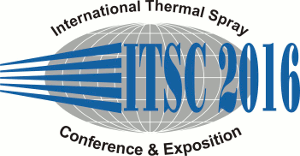
|
4838 |
|
Thursday, May 12, 2016, Yellow River Hall 2:20 PM Power Generation IV |
|
Influence of diode laser glazing on the microstructure and properties of the APS thermal barrier coatings
|
|
Nikolay Zaitsev / Technological Systems for Protective Coatings, Ltd., Russian Federation Ivan Mazilin* / TSPC Ltd, Russia Lev Baldaev/ TSPC Ltd, Russia Yury Novinkin/ TSPC Ltd, Russia Eugeny Marchukov/ A.M. Lyulka Development Design Bureau, Russia Victor Ovchinnikov/ Russian Aircraft Corporation , Russia |
|
Laser glazing of the thermal barrier coating (TBC) ceramic topcoat was shown to be one of the most efficient ways to improve air plasma sprayed (APS) TBC thermal cycling resistance as their thermal conductivity remains comparatively low. Depending on laser source type the beam might have different wavelength and energy distribution. The more homogeneous beam energy distribution used - the more homogeneous structure and thickness of glazed layer might be achieved. Diode lasers are known to have the most uniform energy distribution ( top-hat ) let alone that it is most efficient and cost-effective source type to use. In the present work standard two-layer TBC system (Ni-Cr-Al-Y bondcoat and 7YSZ ceramic topcoat) was sprayed on the surface of Ni-based substrates using APS. Coatings were then subjected to laser glazing to enhance coating lifetime. High power diode laser source with special optics was used to perform the glazing. As a result, the glazed layer was formed in the ceramic topcoat. According to SEM the glazed layer has specific columnar structure and vertical cracks network. Vertical cracks are initiated in the glazed layer but depending on the glazing parameters can propagate on the different depth in the ceramic topcoat. Also some globular pores are present in the glazed layer due to rapid crystallization. Laser glazed coating has higher strain tolerance than as-sprayed coating. During burner rig thermal cycling and long-term isothermal heating tests laser glazed coatings showed better results, than typical as-sprayed coatings. |